Text
I wonder if Paul Gavarni a.k.a. Guillaume Chevallier ever regretted his youthful pseudonym of "Hippolyte." Some of his earliest works from the 1820s were signed H.G. or H. Chevallier. (See his biography by Octave Uzanne).
From now until the end of time, Gavarni bio-blurbs on the Internet, and even the Paris Musées collection, run on the assumption that Hippolyte was his Real Name and not yet another alias. "Paul Gavarni, born Hippolyte Sulpice Abracadabra Champs-Élysées Paul Chevalier Guillaume Chevallier, was a French artist of the 19th century."
#paul gavarni#sulpice was his father's name and isn't on gavarni's tombstone#stop calling him sulpice!!#'paul' is also controversial#the uzanne biography is in english translation and very good btw
12 notes
·
View notes
Text

Grace Darling and her Father rescuing Survivors from the Wreck of the “Forfarshire” on the Farne Islands, Sep. 7th, 1838, by Charlies Achille D’Hardiviller, 1838
153 notes
·
View notes
Text

Paul Gavarni, L'Artiste: Far-Niente ("the artist doing nothing"), 1835.
#paul gavarni#Eighteen-Thirties Thursday#1830s#men's fashion#romantic era#1835#interiors#gavarni and his super-detailed scenes <3#get a load of this guy's headwrap#romanticism
96 notes
·
View notes
Note
do you think old man yaoi can blossom even on a battlefield
Yes. More than anywhere else
16K notes
·
View notes
Text
Elite, mostly male, thinkers remained convinced that men should be paid more than women, and the government passed the 1834 new Poor Law on that assumption:
It is clearly a waste of strength, a superfluous extravagance, (an economic blunder) to employ a powerful and costly machine to do work which can be as well done by a feebler and a cheaper one. Women and girls are less costly operatives than men . . . what they can do with equal efficiency it is therefore wasteful and foolish, economically considered, to set a man to do. By employing the cheaper labour, the article is supplied to the public at a smaller cost and therefore the demand for the article is increased.
"Normal Women: 900 Years of Making History" - Philippa Gregory
10 notes
·
View notes
Text
For #AudubonDay + #InternationalFlamingoDay:

Robert Havell Jr. (engraver) after John James Audubon (artist) American Flamingo, 1838: The Birds of America, Plate 431
hand-colored engraving and aquatint on Whatman wove paper image: 87.63 × 58.58 cm (34 1/2 × 23 1/16 in.) plate: 97 x 65 cm (38 3/16 x 25 9/16 in.) sheet: 101.3 x 68.3 cm (39 7/8 x 26 7/8 in.) National Gallery of Art DC collection (1945.8.431)

Audubon insisted on illustrating every bird in The Birds of America life-size, including this one, but even using the largest paper available (the "double elephant folio") he still had to cheat the pose a bit to make it fit, swooping the neck down in a U-shape.
52 notes
·
View notes
Text
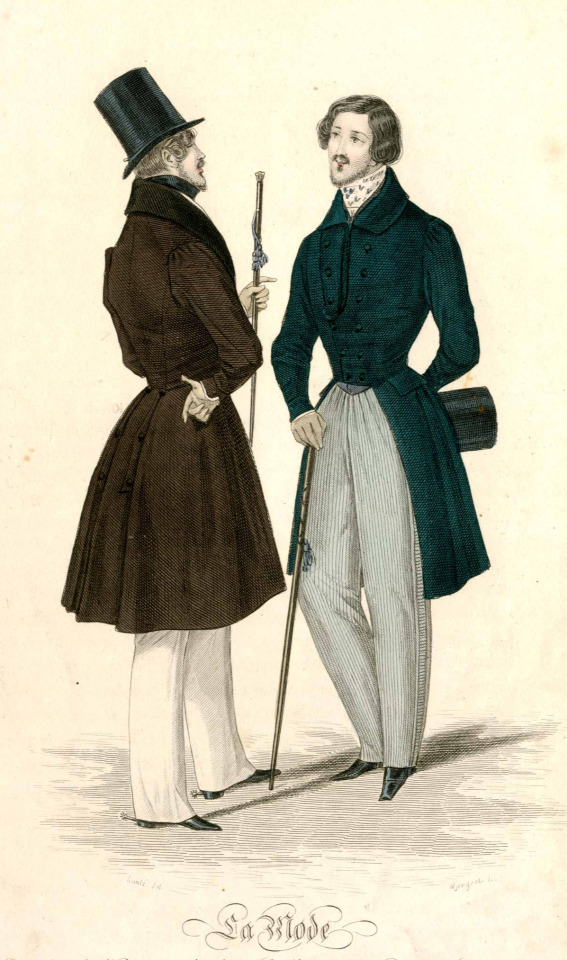
Fashion plate of 29 June 1833 in La Mode (detail), Met Museum. “Gloves, with both sexes, were now becoming conspicuous and important.” — C. Willett Cunnington and Phillis Cunnington on the 1830s, in Handbook of English Costume in the 19th Century.
The gentlemen have yellow gloves, tassled canes, and wear frock coats with cinched waists. Sir Hardy Amies describes the fashion in his book The Englishman’s Suit:
The frock coat appeared about 1830. It was probably of military origin as it fastened high at the neck and was usually double-breasted. It was the same length as the morning coat but the fronts were not cut away. By the middle of the century, Norah Waugh (again!) says, ‘It now became a very worthy and somewhat dull garment, a coat for the well-to-do and professional classes — the hallmark of Victorian respectability’.
To accuse these Romantic fellows of ‘Victorian respectability’ seems harsh, but the Cunningtons describe a growing sense of prudery in the opening chapter to Handbook of English Costume in the 19th Century (“A View of the Century”):
In 1830 Leigh Hunt remarked that ‘so rapid are the changes that take place in people’s notions of what is decorous that not only has the word “smock” been displaced by the word “shift” but even that harmless expression has been set aside for the French word “chemise”, and at length not even this word, it seems, is to be mentioned nor the garment itself alluded to, by any decent writer’.
It was just at this time that parents began to discover additions to their families under gooseberry bushes; polite euphemisms for homely things were springing into use and in place of trousers gentlemen wore nether integuments, inexpressibles, unmentionables, ineffables or unwhisperables.

Frock coat-wearing men in Journal des Marchands-Tailleurs, December 1838: officially in the Victorian era now. (Well, maybe Monarchie de Juillet for these gentlemen).
101 notes
·
View notes
Text
I hope you guys are ready for


2K notes
·
View notes
Text

"After a hard fought victory in Spain, Sharpe's chosen men head to the war-scarred frontier of Upper Canada to face a fanatical new foe - one that believes a 'second war of independence' & failing to conquer your neighbour are the same thing" (x)
#sharpe#war of 1812#unfortunately this doesn't really exist#if only!!!#dying at the description of the war of 1812 by nautical nelsonic memes#and the implication that sharpe burns down the white house#napoleonic#sharpe's america
15 notes
·
View notes
Text

A comment from @northernmariette on the clothing conference at Fort Meigs.
It was nice to be back at Fort Meigs, but I am tall and shy and sat in the back of the room during the fashion show, taking a few bad pics because of the obstructed view.
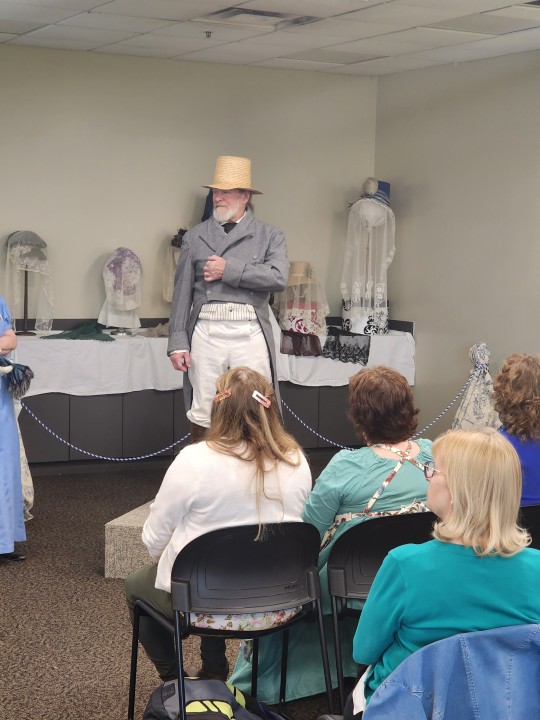

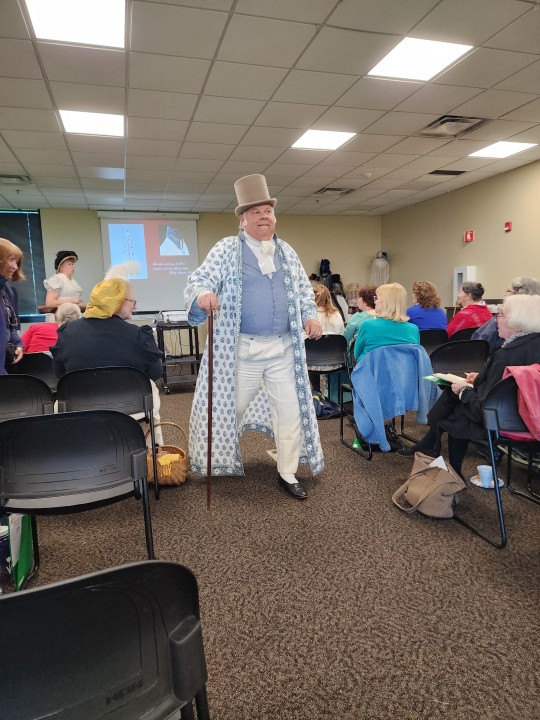
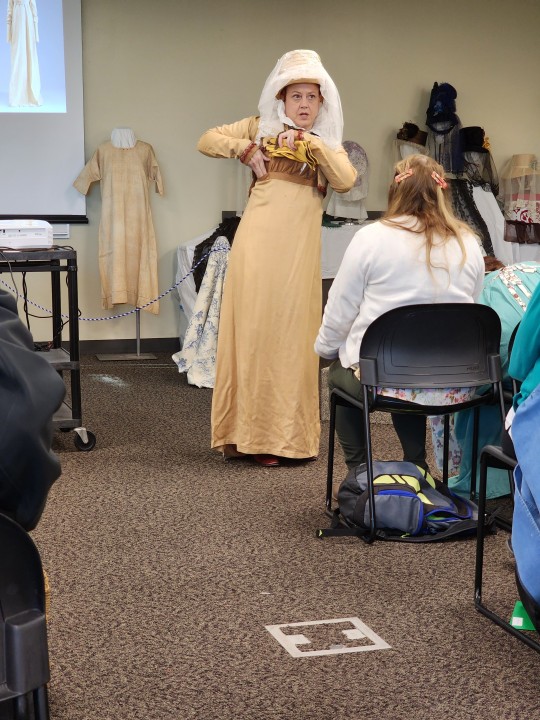


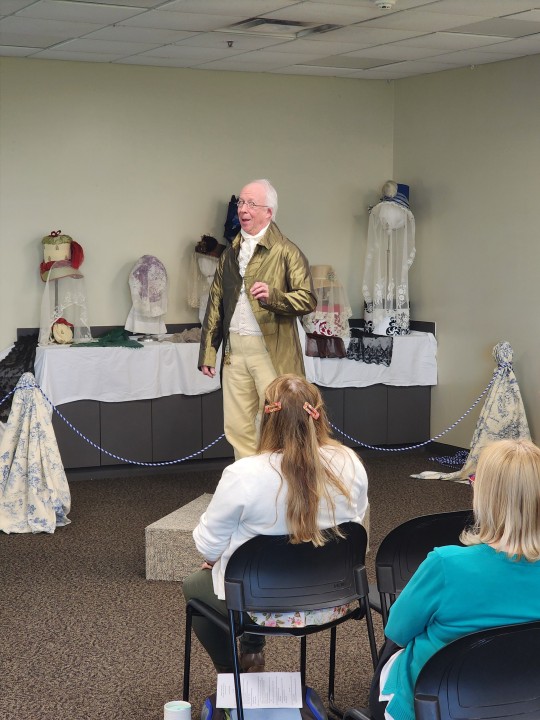
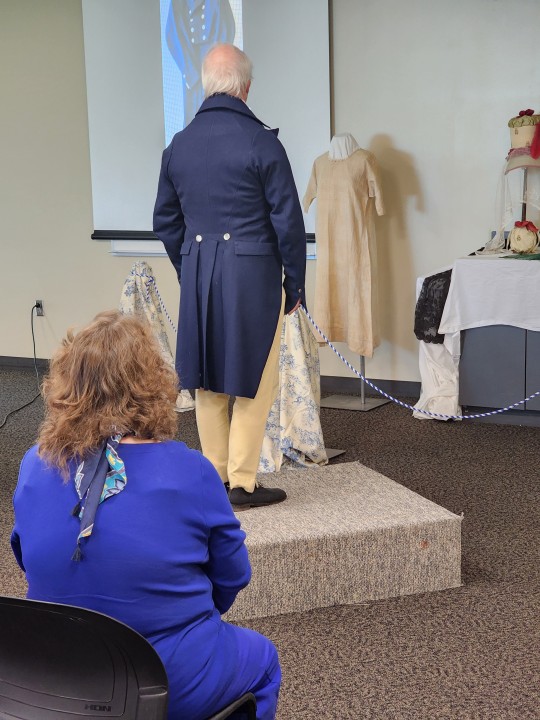
I enjoyed the lectures and gathered some nice references. But I didn't go to the evening soirée event because I was too busy with other things.
The "beginner" fibre arts classes were above my level tbh; everyone was very friendly and nice but they were also Level 9000 Sewing Wizards and I felt out of place.
29 notes
·
View notes
Text
Went to the local museum and found the One Napoleonic Thing there


tiny bone ship!
(The whole exhibition is pretty neat, it's about scale models and museum models, all the descriptions are a little silly/sarcastic)
43 notes
·
View notes
Text
I learned some new regional vocabulary today! Once again travelling for work, I learned from a co-worker that in the Detroit area (including northwest Ohio), they say "Coney Island" to mean diner. You will see signs like: Joe's Coney Island, or Susan's Restaurant and Coney Island. There is a family-owned "Coney Island" eatery near me. (I just thought they were really into hotdogs?)
I also CROSSED THE RIVER RAISIN???!? There was a sign!! We weren't very close to the War of 1812 battlefield, but all things considered, I am so close to the River Raisin omg. Unfortunately there are no pictures because I had to be in work mode with phones put away, but I did mention my interest in the Battle of the River Raisin, I couldn't help it.
15 notes
·
View notes
Text

Conquered but not Subdued by Richard Caton Woodville Jr.
#napoleonic wars#napoleonic#highlanders#cavalry#peninsular war#dressed to kill#i would read the romance novel with this painting on the cover
129 notes
·
View notes
Text
"Wild waves rise and fall when they arrive and that's what makes the calm sea alive."💙
- Munia Khan
350 notes
·
View notes
Text

Ship off the Coast of Labrador, by William Bradford (1823-1892)
102 notes
·
View notes
Text
“why would anyone choose the 1830s?” I Know Why.
101 notes
·
View notes
Text
A shot in the dark, but this reminds me of the legend of the ghost ship Octavius.
I remember encountering the Octavius story in some kind of Strange But True stories collection for children; I was drawn in by the lurid description of the frozen mummified crew and the smell of death below decks. I remember a graphic illustration, too (better than this one I found in a quick search).
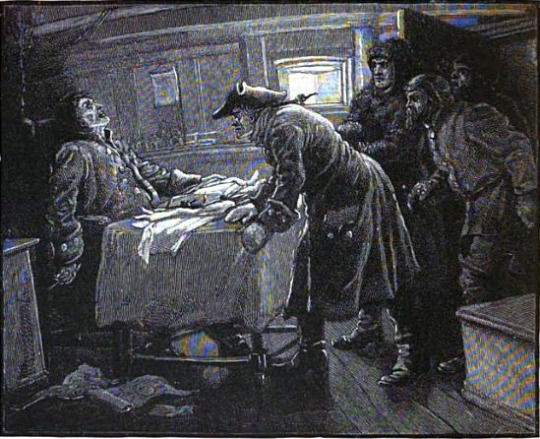
Ahoy, shipmates!
Over the course of several delayed flights this weekend, I devoured a paperback copy of Edgar Allan Poe's The Narrative of Arthur Gordon Pym of Nantucket. I found it enjoyable, if not a Great Classic Work Of Literature.
My question to you now is, there's a chapter in the middle of the book where our castaway hero encounters a plague ship. It moves erratically through the water before them, with what appears to be a smiling, nodding sailor at the rail, acknowledging Arthur and his fellow castaways.
However, as the ship approaches, the stench of death washes over our hero and his companions, and as it passes under their stern, they can see that all aboard the ship are dead of some terrible, unknown disease, and that the smile and nod they perceived were the rictus of death and the movement of a seagull feasting on the dead sailor's flesh.
This is my first time reading this book, and yet there's something viscerally, intensely familiar about this imagery. I feel like I've read this somewhere else before. Perhaps it was in a graphic novel, because my mental image of this scene appears in a sort of comic-book style.
Does anyone have any ideas where I might have encountered this before? Any help would be appreciated.
@clove-pinks
@benjhawkins
@ltwilliammowett
@saranilssonbooks
#i should read again#the narrative of arthur gordon pym of nantucket#i remember it was very good#the sea#maritime history#ghost ships#octavius
39 notes
·
View notes